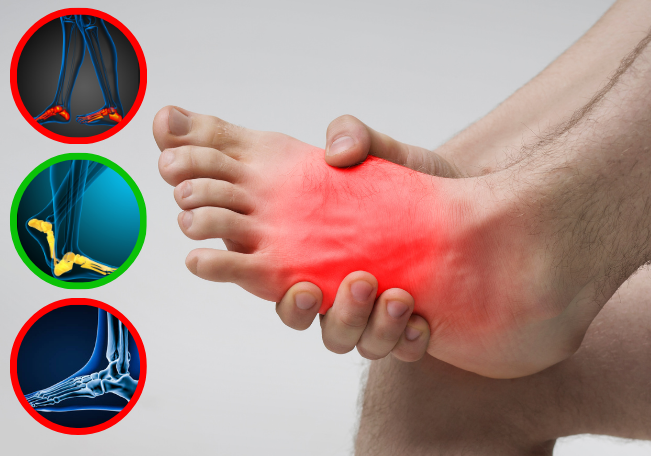
Foot Misalignments: 5 Tips for Foot Health
Foot misalignments, such as flat feet or high arches, don’t just affect the appearance of your feet.
They can significantly impact the health of your feet, knees, and your entire body.
The alignment of your feet influences everything, especially the well-being of your feet.
How do foot misalignments manifest in everyday life?
A foot misalignment means that the arch of the foot is either too low (flat feet) or too high (high arches).
In both cases, the foot's ability to absorb impact while walking is reduced, which often leads to pain and strain in the feet, knees, back, and pelvic area.
This is how they affect your everyday life.
Flat feet
Excessive inward rolling of the foot (overpronation) caused by flat feet can lead to pain in the knees, hips, and lower back.
Here are the most common causes and symptoms:
Causes:
- Genetics (natural foot structure)
- Wearing poorly supportive footwear
- Increased body weight
Symptoms:
- Pain in the foot or heel, such as plantar fasciitis
- Swelling on the inside of the ankle
- Knee, hip, or back pain
High arch
A high arch, on the other hand, can lead to excessive outward rolling of the foot (oversupination), which increases the risk of ankle sprains and causes pain on the outer edge of the foot.
Causes:
- Stiff muscles and joints in the foot
- Wearing shoes that lack flexibility or proper cushioning
- Previous injuries affecting foot movements
Symptoms:
- Ankle sprains due to instability
- Pain on the outer side of the foot
- Calluses or blisters in areas exposed to excessive pressure
- Pain in the lower back, hips, or knees due to improper alignment
Both conditions can also increase the risk of plantar fasciitis, as they put additional strain on the feet and reduce flexibility in the soles.
5 Tips for Foot Pain Relief
1. Footwear choice and arch support
Choosing the right shoes is a critical step in correcting foot misalignments. For flat feet, opt for shoes that provide arch support and prevent overpronation.
For high arches, look for shoes that offer good cushioning and support on the outer edge of the foot. Pay attention to materials, fit, and the shape of the sole when selecting footwear.
2. Proper Insoles: Practical Help for Misalignments
The right insoles can be a crucial aid in correcting foot misalignments. They help distribute weight more evenly across the foot and support the arch.
You can find insoles that support your foot and evenly distribute weight by clicking here.

3. Strengthening Foot and Leg Muscles
Strengthening the muscles in the feet and lower legs is essential for maintaining proper foot alignment. For example, you can perform exercises like "toe lifts," where you lift your toes off the ground while keeping your heels planted.
Another good exercise is "heel raises," where you stand on your toes, raising and lowering your heels.
4. Regular Stretching: Flexibility and Pain Relief
Stretching is an essential part of managing foot misalignments. For example, you can perform a foot stretch by sitting in a chair, placing the sole of your foot on a ball or roller, and rolling it back and forth. This helps increase flexibility and relieve discomfort.
This stretches the muscles and fascia of the foot, helping to relieve pain and improve mobility. Stretching the Achilles tendon and calf muscles is also important.
5. Improving Proprioception: Mindful Movement
Improving proprioception can help you better understand how you use your feet and how to improve your posture. For example, you can practice balance by standing on one leg or doing exercises that require precise control of foot movements.
These exercises help you become more aware of your foot alignment and improve the quality of your gait.
Summary
Foot misalignments can significantly impact your quality of life, but by taking the right steps, you can relieve pain and improve your mobility.
With the right shoes, proper insoles, muscle strengthening, regular stretching, and improved body awareness, you can make significant strides toward healthier and happier steps.
Remember, every small change can lead to a big improvement in your quality of life.



